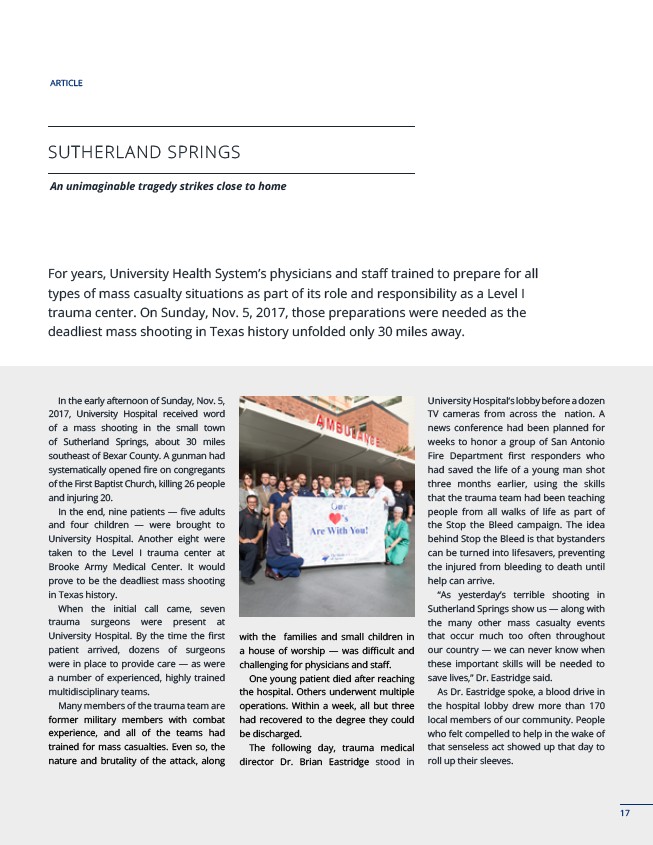
For years, University Health System’s physicians and staff trained to prepare for all types of mass casualty situations as part of its role and responsibility as a Level I trauma center. On Sunday, Nov. 5, 2017, those preparations were needed as the deadliest mass shooting in Texas history unfolded only 30 miles away.
In the early afternoon of Sunday, Nov. 5, 2017, University Hospital received word of a mass shooting in the small town of Sutherland Springs, about 30 miles southeast of Bexar County. A gunman had systematically opened fire on congregants of the First Baptist Church, killing 26 people and injuring 20. In the end, nine patients — five adults and four children — were brought to University Hospital. Another eight were taken to the Level I trauma center at Brooke Army Medical Center. It would prove to be the deadliest mass shooting in Texas history. When the initial call came, seven trauma surgeons were present at University Hospital. By the time the first patient arrived, dozens of surgeons were in place to provide care — as were a number of experienced, highly trained multidisciplinary teams. Many members of the trauma team are former military members with combat experience, and all of the teams had trained for mass casualties. Even so, the nature and brutality of the attack, along with the families and small children in a house of worship — was difficult and challenging for physicians and staff. One young patient died after reaching the hospital. Others underwent multiple operations. Within a week, all but three had recovered to the degree they could be discharged. The following day, trauma medical director Dr. Brian Eastridge stood in University Hospital’s lobby before a dozen TV cameras from across the nation. A news conference had been planned for weeks to honor a group of San Antonio Fire Department first responders who had saved the life of a young man shot three months earlier, using the skills that the trauma team had been teaching people from all walks of life as part of the Stop the Bleed campaign. The idea behind Stop the Bleed is that bystanders can be turned into lifesavers, preventing the injured from bleeding to death until help can arrive. “As yesterday’s terrible shooting in Sutherland Springs show us — along with the many other mass casualty events that occur much too often throughout our country — we can never know when these important skills will be needed to save lives,” Dr. Eastridge said. As Dr. Eastridge spoke, a blood drive in the hospital lobby drew more than 170 local members of our community. People who felt compelled to help in the wake of that senseless act showed up that day to roll up their sleeves.